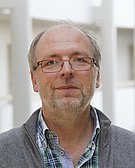Spirituality as a resource
Project overview
For research purposes, it is useful to distinguish between spirituality and religiosity - although there is a profound debate as to whether it is even appropriate to separate the two constructs. Nevertheless, spirituality is a complex and multidimensional construct that can be conceptualised as an open and individual approach to experience in the search for meaning and purpose in life on the one hand or for the "sacred" (as Ken Pargament puts it) on the other. Spirituality can be found through religious commitment, through an individual experience of the divine and/or through a connection to others, the environment and the sacred. Thus, a distinction could be made between spirituality in religion (which implies a more open, individual and pluralistic faith) and spirituality in contrast to religion (which rejects organised religiosity).

Photo: Arndt Büssing
Multidimensional approaches
Therefore, one needs to ask about the "core" dimensions and distinguish these from related aspects that can be considered "outcomes", i.e. altruistic behaviour, feelings of inner peace, spiritual practices such as praying, meditation, etc. In addition, several individuals may have certain unmet psychosocial, emotional, existential and religious needs that in most cases are not adequately addressed in a therapeutic setting. These needs may be related to the themes of connection, peace, meaning and transcendence and can be found in both religious and a-religious individuals. Regardless of which definition one chooses to operationalise this complex construct, it is important to recognise that it is multi-layered and therefore in some cases multidimensional approaches are preferable. To account for the fact that some people do not consider themselves religious but are still interested in secular forms of spirituality, we have developed several standardised instruments that address different aspects of spirituality.
Instruments for measuring the dimensions associated with spirituality and quality of life
If you need an instrument to measure certain aspects and facets of the complex construct of spirituality/religiosity on the one hand and quality of life related measures on the other, here are some options (developed by our research unit at Witten/Herdecke University). Below you will find a list of the questionnaires with their subscales, translations and adaptations. They are the property and copyright of Prof Dr Arndt Büssing and can be obtained with the consent of the copyright holder for researcher-initiated studies. Please send an email to Prof Dr Arndt Büssign with the specific questionnaire title to request these questionnaires.
Spirituality
- SpNQ - Spiritual, existential and psychosocial needs
- SpNQ-20
- SpREUK - Spiritual/religious attitudes and reflection of illness and life concerns
- ASP - Aspects of Spirituality (generic)
- BENEFIT - through own spiritual/religiosity
- SpREUK-P - Engagement in and importance of various forms of existential, prosocial and religious practices
- GrAw-7 - Gratitude and Awe scale
- EtG - Emotions towards God
- SDS - Spiritual Dryness Scale
- GAS - Generative Altruism Scale
- RGH - Reliance on God's Help
Quality of life measures
In the broad context of quality of life problems and coping, there are some other dimensions that could be interesting to assess. Perceived changes (due to the coronavirus pandemic).
- BMLSS - Brief Multidimensional Life Satisfaction Scale (generic)
- AKU - Adaptive Strategies to Cope with Illness (in the context of the locus of control concept)
- IIQ - Positive and Negative Interpretations of Illness
- ICPH - Inner Congruence and Peaceful Harmony with Mind-Body interventions (i.e. yoga, meditation, therapeutic eurythmy)
- CPSC - Conscious Presence and Self-Control (Situational Awareness; mindfulness)
- LHR - Lightheartedness / Relief and Social Interest
- ePLC - Positive Life Constructions (despite disease symptoms)
- Affected Body Image and Self-Acceptance (i.e. persons with limp amputations)
- Intention and Abilities to Change (of patients' attitudes and life concerns)
- POHW - Positive Oral Health and Wellbeing
To measure the reactions of emotional exhaustion and detachment of doctors, nurses, psychotherapists, teachers, etc. towards their patients, clients, students, etc., the following instrument can be used:
- Cool Down Index - emotional exhaustion and distancing
Answers to frequently asked questions
- Permission to use one or more of the instruments in English (or other languages) can be obtained from Prof. Dr Arndt Büssing (e-mail: arndt.buessing@uni-wh.de). Please state the specific title of the questionnaire in your enquiry.
- In most cases, there is no charge for the use of the questionnaires if they are used in researcher-initiated studies.
- If you have obtained permission to use a particular instrument, please provide us with copies of all publications related to the data collected with these questionnaires.
- You may not change the wording or wording of the instruments without prior authorisation. However, you may add further elements to extend the range. This requires the authorisation of the copyright holder.
- On request, you may receive help with the evaluation and interpretation of the data. In most cases, reference values are available, but these may vary according to culture and context.
Project management

Univ.-Prof. Dr.
Arndt Büssing
Professor
Faculty of Health (School of Medicine) | Chair of Medical Theory, Integrative and Anthroposophic Medicine
- +49 2330 62-3246
Orcid ID: 0000-0002-5025-7950
Gerhard-Kienle-Weg 4
58313 HerdeckeRoom number: Haus D, DG